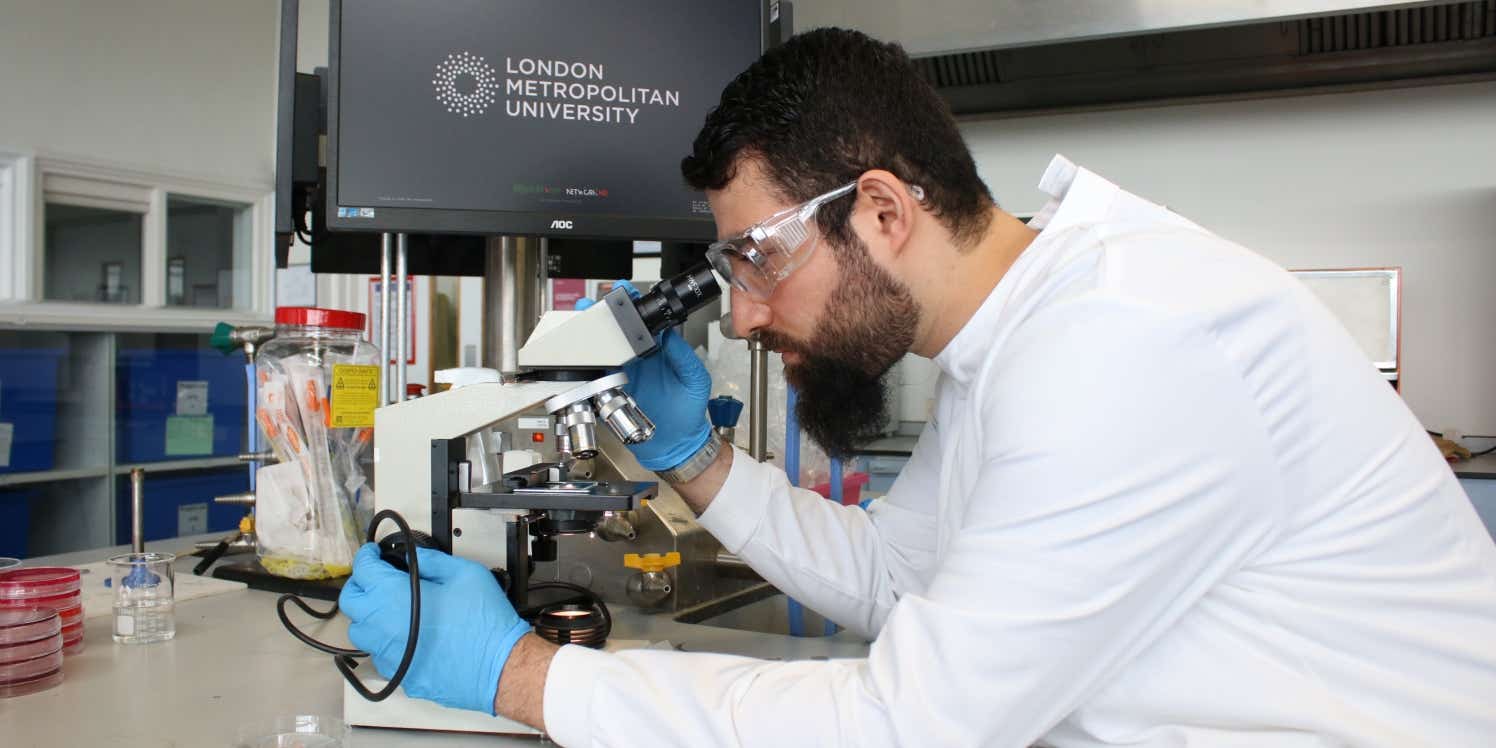Revealed: The life threatening bacteria on your cash
We've teamed up with the London Metropolitan University to put cash under the microscope and the results are shocking. Here are the facts about how dirty money is.

11 billion cash payments were made in the UK in 2018, but paying for goods with cash is declining, with only 28% of transactions being paid for with coins and notes.
Shoppers like the convenience of contactless card payments, but could paying by plastic benefit your health too?
Key findings
19 different types of bacteria discovered
2 superbugs including MRSA discovered on our coins and notes
Listeria found on 20p, 50p, and £1 coins and on our notes
Testing your cash
Microbiologists studied the bacteria in a controlled lab environment over a period of 8 weeks.
Money under the microscope
Dr Paul Matewele, Professor of Microbiology at London Met, and his students took 36 samples from a random selection of all denominations of coins and notes.
19 different bacteria were found across UK coins, polymer £5 and £10 notes and paper £20 and £50 notes.
This includes 2 life threatening bacteria associated with antibiotic resistant superbugs: Staphylococcus aureus (MRSA) and Enterococcus faecium (VRE).
The life-threatening airborne bacteria, Listeria was also found.
The results in full
The study revealed cash is incredibly dirty and a breeding ground for bacteria.
in 2017 the World Health Organisation (WHO) published its first ever list of antibiotic-resistant bacteria, which pose the greatest threat to human health.
Shockingly two of these bacteria were found on the cash we touch everyday.
Bacteria on our coins
| Coin | Bacteria |
|---|---|
| 1p | Bacillus, Coliforms & Micrococcus |
| 2p | Bacillus, Bacillus amyloliquefaciens, Coliforms, Enterococcus & S. Aureus |
| 5p | Bacillus Amyloliquefaciens, Coliforms, Enterococcus, Micrococcus & S. Aureus |
| 10p | Coliforms, Enterococcus, Micrococcus & S. Aureus |
| 20p | Bacilus firmus, Bacilus lentus, Listeria & Micrococcus |
| 50p | Aneurinibacillus Aneurinilyticus, Brevibacillus Centrosporus, Coliforms, Micrococcus & Listeria |
| £1 | B. lentus, B. Pumilus, Coliforms, Listeria & S. Aureus |
| £2 | Bacilus Pumilus, Geobacillus Thermoglucosidasius & S.aureus |
Bacteria on our bank notes
| Note | Bacteria |
|---|---|
| £5 | Bacillus Pumilus, Coliforms, Listeria & Yeast |
| £10 | Enterococcus, Listeria, Micrococcus & S. Aureus |
| £20 | Bacillus, Coliforms, S. Aureus |
| £50 | Bacillus, Micrococcus & S. aureus |
Some of the most common bacteria were:
Staphyloccus Aureus (MRSA): The 2p, 5p, 10p, £1 and £2 coins, and the £10, £20 and £50 notes were all found to have Staphyloccus Aureus (MRSA). This antibiotic resistant bacteria is listed as one of the greatest threats to life by the WHO. It can cause boils, impetigo, food poisoning, cellulitis and toxic shock syndrome.
Enterococcus faecium: Found on the 2p, 5p and 10p coins as well as the £10 note. It is also present on the World Health Organisation's list of antibiotic resistant bacteria. It can cause infections of the abdomen, skin, urinary tract and blood. People with lowered immune systems are particularly susceptible to this infection.
Listeria: Found on the 20p, 50p and £1, as well as the £5, £10 and £20 notes. The bacteria can lead to infection which is usually caught by eating contaminated food. The infection can cause food poisoning and even miscarriage. There have been 47 cases of Listeria reported as of June 2018 and 9 deaths.
Bacteria found in faeces: This can cause urinary tract infections and septicemia. Bacteria which can cause thrush, nappy rash and diarrhoea was also found.
What the experts say
One of the most shocking discoveries was finding so many microorganisms thriving on metal, an element you wouldn't normally expect to see germs surviving on. The bugs have adapted to their environment, resulting in coins becoming a breeding ground for harmful bacteria.
People who have compromised immune systems could be most at risk from handling dirty money - if you're visiting people in hospital who might be vulnerable to infection, you could unknowingly transfer bacteria off your cash which is resistant to antibiotics.
Source: Dr Paul Matewele, Professor of Microbiology at London Metropolitan University
It's shocking to see that two of the world's most dangerous bacteria were on the money we tested.
Despite thinking that newer polymer notes would be cleaner, we were appalled to find out even they were growing some life threatening bugs. Our research supports the continued move towards a cashless society and might be the end of the line for our dirty money. I suspect people may think twice before choosing to pay with cash knowing they could be handed back change laced with superbugs.
We'd recommend and remind people to wash their hands thoroughly after handling money to help prevent spreading harmful bacteria.
Source: Salman Haqqi, Personal Finance Expert at money.co.uk
Glossary of bacteria
Enterococcus
Problem in Hospital Acquired Infections (HAI) due to increased resistance to antibiotics such as vancomycin in vancomycin resistant Enterococcus (VRE).
S. Aureus
There is the fear of Methicillin resistant S. Aureus (MRSA) becoming extensively-drug resistant (XDR)/pandrug resistant (PDR). These pose a problem in HAI.
Coliforms
These are gut bacteria and their isolation is associated with poor hygiene. They are associated with urinary tract infections and in some cases septicaemia. They are also responsible for HAIs.
Listeria
These are associated with food borne exposure to the bacteria resulting in septicaemia, abortions, and encephalitis. Some strains have developed resistance to clindamycin, tetracycline and ciprofloxacin.
Micrococcus
These are not considered to be pathogens and are isolated from skin, animal and dairy products. They can be opportunistic pathogens in immunocompromised people.
Yeast
May cause candidiasis.
Bacillus pumilus
Rarely causes infection but there have been cases of cutaneous infection, septicaemia in babies.
Bacillus lentus
Rarely produces diarrhoegenic toxin.
Brevibacillus laterosporus
Beneficial bacteria used in pest control.
Geobacillus thermoglucosidasius
Beneficial bacteria used in biofuel production e.g. isobutanol and ethanol.
Bacillus firmus
Beneficial bacteria used in pest control.
Brevibacillus centrosporus
Beneficial bacteria providing protection against bee pathogens.
Aneurinibacillus aneurinilyticus
Beneficial bacteria with anti-fungal metabolites.
Pasteurella pneumotropica
Opportunistic pathogen of rodents but has been reported in a case of septicaemia.
Mannheimia haemolytica
May cause respiratory infection in sheep and cattle rarely infects humans but has been reported in a case of infant septicaemia.
Pseudomonas luteola
Opportunistic pathogen that has been implicated in a number of infections.
Bibersteinia trehalosi
A pathogen of goats and sheep but in some rare cases may infect humans.
Staphylococcus epidermidis
Causes biofilms to grow on plastic devices placed within the body. This occurs most commonly on intravenous catheters and on medical prostheses. Infection can also occur in dialysis patients or anyone with an implanted plastic device that may have been contaminated.
